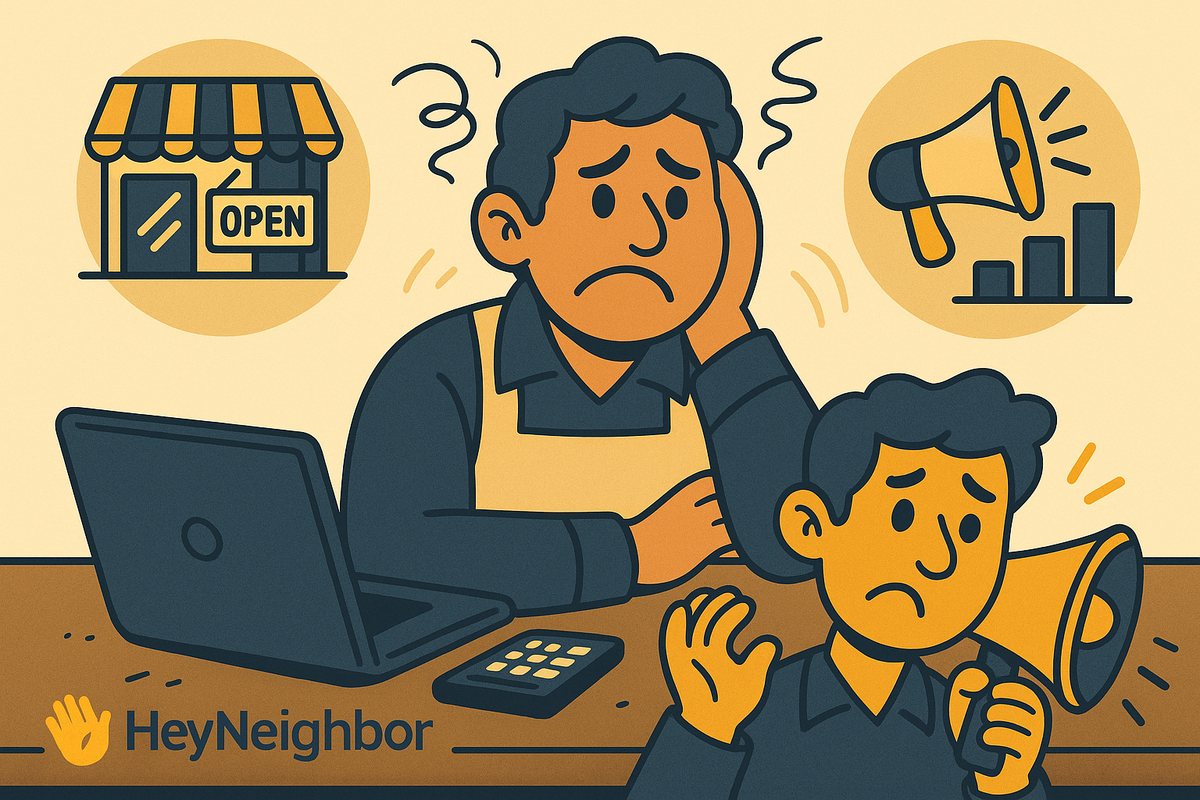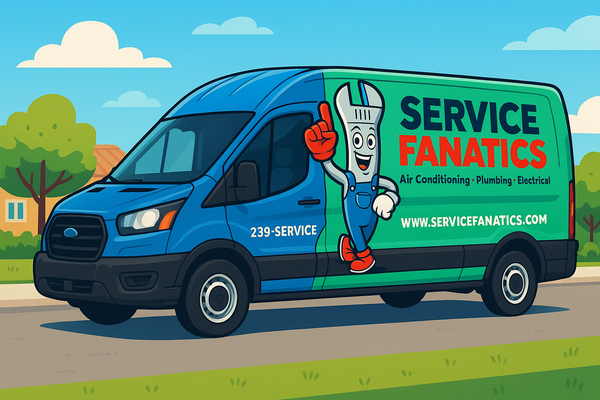The Top Advertising Pain Points for Local Small Businesses
This in-depth guide unpacks the top advertising pain points and why they matter, with trusted data and insights that every business owner should know.

In today’s digital-first economy, local small business owners face a growing challenge: how to make advertising work without breaking the bank or losing precious time. Whether you're running a bakery, a home services company, or a boutique fitness studio, chances are you've run into at least one of these pain points.
At HeyNeighbor, we talk with small business owners daily, and this article brings together the most common—and most costly—advertising challenges they face. If you're a business owner, marketer, or advisor, this is your reference guide to understanding the stakes of local advertising today.
1. Budget Constraints & ROI Pressure
The reality: Business owners often say they've "boosted posts" or run some search ads, but never saw measurable results. Without a clear ROI, it’s tough to justify the expense.
What’s at stake: When advertising becomes a guessing game, it erodes confidence and slows growth. Every dollar counts, and wasted spend can mean missed opportunities or tough staffing decisions.
Why HeyNeighbor stands out: Unlike broad platforms built for national brands, HeyNeighbor delivers locally-tuned campaigns with built-in tracking. You see what’s working in your neighborhood without the learning curve.
Related insight: According to a 2023 Local Marketing Trends Report, 61% of small business owners cited ROI uncertainty as their top marketing concern.
2. Lack of Time & Resources
The reality: Advertising gets done “when there’s time”—which often means never. Or it’s rushed, inconsistent, and disconnected from business goals.
What’s at stake: Inconsistent visibility means inconsistent leads. Your brand fades from the community’s mind without regular outreach, especially as competitors stay active.
A 2022 SCORE study found 47% of small businesses spend fewer than 2 hours a week on marketing.
3. Targeting & Local Visibility Challenges
The reality: Even the best service or product can go unnoticed if the messaging doesn’t feel relevant, or reach the right people.
What’s at stake: Poor targeting wastes precious dollars and misses the chance to connect with nearby customers who are ready to buy or book.
Google data shows that “near me” searches have increased over 500% in recent years—yet most local ads don’t optimize for location-specific terms.
4. Tracking & Measuring Results
The reality: Many business owners launch campaigns with no visibility into outcomes. There’s no way to tell which ads led to calls, clicks, or foot traffic.
What’s at stake: Without clear data, businesses keep flying blind—investing in ads that may not perform and skipping strategies that could scale.
Only 1 in 3 small businesses actively track marketing ROI, according to BIA/Kelsey research.
5. Platform Disruptions & Over-Reliance
The reality: One sudden policy update or outage can interrupt all your outreach. That’s a major vulnerability when a single platform is your main source of visibility.
What’s at stake: You risk losing access to your audience overnight, and have no backup plan to keep communication flowing.
A March 2024 Meta outage caused a 37% drop in daily revenue for small retailers relying solely on social.
6. Lack of Advertising Expertise
The reality: Platforms like Google and Facebook aren’t beginner-friendly. Even basic missteps—picking the wrong objective or skipping targeting settings—can tank performance.
What’s at stake: Without the right strategy, you can burn money and time, while competitors get better results with less effort.
Studies show small businesses are 2–3x more likely to misconfigure ad platforms compared to trained marketers.
7. Local Trust & Reputation Building
The reality: Many small businesses haven’t claimed key listings or struggle to earn and respond to reviews. This erodes trust, even before someone walks in the door.
What’s at stake: Consumers often choose the business with the strongest online presence, not necessarily the best service. Without a trusted digital reputation, good businesses get overlooked.
88% of consumers trust online reviews as much as personal recommendations, per BrightLocal’s 2023 Consumer Review Survey.
Final Thoughts
You don’t have to do everything, but doing a few things right makes all the difference. These pain points are real, but they’re not permanent.
At HeyNeighbor, we help local businesses simplify advertising and grow with confidence—using tools built for the challenges you face.
If you found this useful, bookmark it or share it with a fellow business owner. When more local businesses succeed, our neighborhoods do too.





